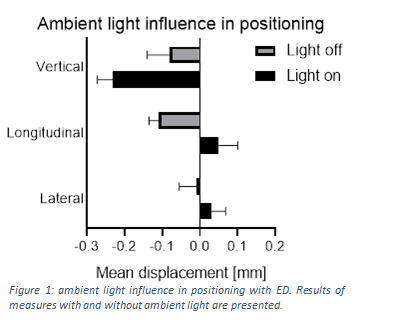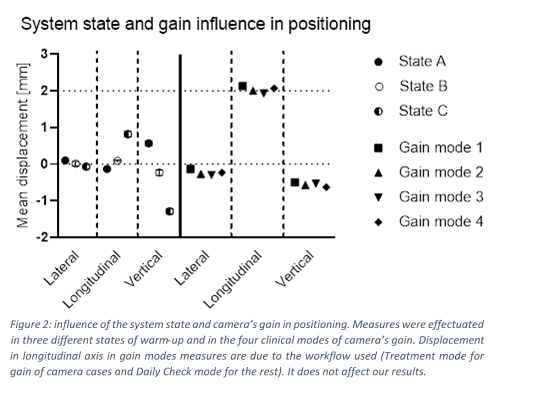Evaluation of the performance of Brainlab Exactrac Dynamic under different operation conditions
PO-1836
Abstract
Evaluation of the performance of Brainlab Exactrac Dynamic under different operation conditions
Authors: Rodrigo Astudillo Olalla1, Jose Antonio Blanco Rodriguez2, Diego Bruzos Lopez2, Veronica Cañon Garcia2, Uriel Alexander Corro Verde2, Rosa Fabregat Borras2, Fernando Gomez Enriquez2, Samuel Ruiz Arrebola2, Jose Andres Vazquez Rodriguez2, Mara Garcia Lamela2, Frandeina Pinto Guevara2, Maria Teresa Pacheco Baldor2, Jorge Alonso Muriedas2, Guillermo Camacho de la Vega3, Ana Reguilon Martin3, Pilar Itziar Valverde Pascual4, Mario Martin Veganzones5, Javier Albendea Roch1, Juan Ignacio Raba Diez6, Marina Gutierrez Ruiz1, Ana Laura Rivero Perez1
1Hospital Universitario Marqués de Valdecilla, Radiation Oncology Department, Santander, Spain; 2Hospital Universitario Marqués de Valdecilla , Radiation Oncology Department, Santander, Spain; 3Hospital Universitario Marqués de Valdecilla , Radiation Protection Department, Santander, Spain; 4Hospital Universitario de Cruces, Medical Physics and Radiation Protection Department, Barakaldo, Spain; 5Hospital Universitario de Cruces , Medical Physics and Radiation Protection Department, Barakaldo, Spain; 6 Hospital Universitario Marqués de Valdecilla, Radiation Oncology Department, Santander, Spain
Show Affiliations
Hide Affiliations
Purpose or Objective
Brainlab recommends the use of its Brainlab Exactrac Dynamic (ED) surface-guided radiation therapy (SGRT) system under specific conditions of equipment operating status, ambient light in the treatment room and gain of its projected light detection cameras. We evaluate how those conditions influence in the accuracy and precision of patient positioning using SGRT with ED.
Material and Methods
The ED installed on a Varian TrueBeam STX lineal accelerator was used as well as the System Calibration Phantom.
Exactrac Dynamic uses the structured light projection as SGRT technology and it has three warming-up states, depending on whether the structured light projector has been on for less than 10min or more than 1h. In addition, in clinical mode, the system has 4 gain modes for its projected light detection cameras. Also, Brainlab recommends to use ED without ambient light in the treatment room.
The four gain modes (1, 2, 3 and 4), the three operating states (A, B and C) and the presence of ambient light have been evaluated for their influence on positioning, which was repeated 3 times for each of the measurement conditions. The accuracy was evaluated as the difference between the SGRT and the stereoscopic X-ray positioning and a statistics analysis was performed to compare between the difference work conditions.
Results
- Ambient light of the treatment room: an accuracy lower than 0.3 mm is observed in figure 1 for both cases. A p-value of 0.02, 0.018 and 0.3 for vertical, longitudinal and lateral axis respectively was obtained.

- System state: It is observed, in figure 2, that state B (reference) has an accuracy lower than 0.3 mm, better than the other two states (higher than 0.5 mm in vertical and longitudinal axis). P-values lowers than 0.05 were obtained for all axis.
- Gain of cameras: For every axis, a p-value over 0.05 was obtained (0.54, 0.71 and 0.45 for lateral, longitudinal and vertical axis respectively). Similar accuracy in all axis was observed (figure 2).

Conclusion
It has been observed that the gain can be modified without affecting the positioning under the measure conditions evaluated. In the other two cases, it is noted that there are significant differences when the measurement conditions are changed. Therefore, ED must be operated in warm-up state B and without ambient light, due to their influence to the position achieved by the SGRT system.